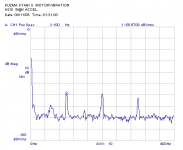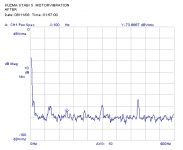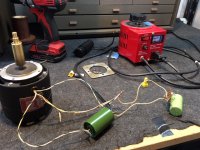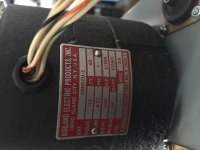That's distribution at 4160V and it's really rare, I doubt it shows up in homes even in Philly. It would be stepped down first to single phase 230V.
You would find the one or two exceptions, but again distribution, not domestic..
Electrical Service Types and Voltages – Continental Control Systems, LLC
My neighborhood has 3 phase at ~23kV I no longer remember if it is wye or delta as this is what the city electrical inspector told me 15 years ago. (For some reason I think it might be grounded Delta, but who knows..)
You would find the one or two exceptions, but again distribution, not domestic..
Electrical Service Types and Voltages – Continental Control Systems, LLC
My neighborhood has 3 phase at ~23kV I no longer remember if it is wye or delta as this is what the city electrical inspector told me 15 years ago. (For some reason I think it might be grounded Delta, but who knows..)
I've see a lot of mislabeling as far as "motor start" (gets switched out by a centrifugal switch in the motor body) vs. "motor run" (always connected) even among pros and people who "should know better," but the REAL name ...
Since it changes the phase of a magnetic flux, it should be called a "flux phase capacitor."
There's a nice way to minimize vibration from the motor but you need a spectrum analyzer and a vibration pickup like a small accelerometer sensor.
You look at the spectrum and you will see a couple of harmonics of the main rotation frequency. Adjust the cap value for minimum harmonic amplitude. Attached is a result with a regular LP turntable AC motor.
Jan
Attachments
As a youngster, I used to dream of becoming a High Voltage Engineer.That's distribution at 4160V and it's really rare... It would be stepped down first to single phase 230V.
Turns out it was just a phase I was going through!

There's a nice way to minimize vibration from the motor but you need a spectrum analyzer and a vibration pickup like a small accelerometer sensor.
You look at the spectrum and you will see a couple of harmonics of the main rotation frequency. Adjust the cap value for minimum harmonic amplitude. Attached is a result with a regular LP turntable AC motor.
Jan
Jan - couldn't this be achieved (albeit rather crudely, without the spectrum analyzer and accelerometer) by just listening to the motor and trying different values for capacitors? In my case, the cap is 2uF. I could try 2uF +/- 0.1uF and listen for improvement. Continue this until the improvement ceases and start to degrade. I often use a stethoscope to listen for vibration. A stethoscope (about $20 USD) is a great purchase for analogue DIYers.
I tried changing the starting cap (flux phase cap, running cap, etc.) values and listening via the stethoscope to determine if there are vibration induced noises difference.
The answer: YES, its very easy to detect.
Here is where I currently stand:
2.0uF + 0.47uF = more noise than 2.0uF (so, let's try less than 2.0uF)
0.47uF = less noise than 2.0uF. However, need to manually turn motor spindle to get it going
0.47+0.47uF = less noise than 0.47uF. However, need to manually turn motor spindle to get it going
0.47+0.47+0.47uF = less noise than 0.47+0.47uF & motor starts by itself.
I am going to play around further to see if there is a noticeable difference near 1.5uF +/-0.1uF.
note: all these tests are with a motor/spindle without driving the platter. In other words, this is the motor by itself.
Also, when the AC voltage is reduced, the motor vibration reduces as well.
The motor vibration is diminished to the point where no vibration is coming into the plinth. However, my concern is whether or not any vibration would transfer from the motor to the idler wheel to the platter. Any thoughts on this?
The answer: YES, its very easy to detect.
Here is where I currently stand:
2.0uF + 0.47uF = more noise than 2.0uF (so, let's try less than 2.0uF)
0.47uF = less noise than 2.0uF. However, need to manually turn motor spindle to get it going
0.47+0.47uF = less noise than 0.47uF. However, need to manually turn motor spindle to get it going
0.47+0.47+0.47uF = less noise than 0.47+0.47uF & motor starts by itself.
I am going to play around further to see if there is a noticeable difference near 1.5uF +/-0.1uF.
note: all these tests are with a motor/spindle without driving the platter. In other words, this is the motor by itself.
Also, when the AC voltage is reduced, the motor vibration reduces as well.
The motor vibration is diminished to the point where no vibration is coming into the plinth. However, my concern is whether or not any vibration would transfer from the motor to the idler wheel to the platter. Any thoughts on this?
Here is the motor plate. FYI: I am going to post a new DIYAudio post asking for someone to make me a motor drive. I do not want to make it myself and am willing to pay someone for their time and experience. Let me know if you know someone who might be interested.
Pat
banpuku@mac.com
Pat
banpuku@mac.com
Attachments
Turntable AC motors are pretty much free running once up to speed and as a result cogging becomes more pronounced. Add a little consistent load, thicker oil or eddy brake and the cogging is reduced. It's a genuine free lunch as long as you don't over do it.
I think that only applies to motors with permanent magnet pole pieces. Hysteresis motors, at least the Papst ones I'm familiar with, and I believe also the Ashland, Bodine, and others of that type, are less efficient, but do not suffer from cogging.
What can be learned about motors and how they react both loaded and unloaded is huge.
I have found very little on how the magnetics react in a non linear fashion to load. The entire motion control industry seems to flounder when the rubber meets the road. I am working on that..
Jn
I have found very little on how the magnetics react in a non linear fashion to load. The entire motion control industry seems to flounder when the rubber meets the road. I am working on that..
Jn
..My neighborhood has 3 phase at ~23kV I no longer remember if it is wye or delta...(For some reason I think it might be grounded Delta, but who knows..)
Or cares. You get three hot wires and often a ground/neutral wire at your building service entrance. How they wrap around the street transformer is not your concern.
BTW: they often alternate wYe and Delta at each step-down to cancel stray currents.
I am startled, not shocked, that Center Philly still has 2-phase. Naturally residences would be fed 1-ph 230V CT from the pole/vault transformers.
No, they'd never supply 4KV to anybody who didn't have their own transformers or some HUGE motors.
SUCCESS!!! She's running. OK, I re-assembled the bottom bushing components and I changed the order of 2 of the components. The "star" should go on top of the "small ufo disc". Then the larger UGO disc goes on top of the "star". Forgive me in advance as I do not know the correct names for these parts. Here is the proper order of assembly starting from the bottom going to the top:
1. bronze bushing
2. felt oil ring
3. small UFO disc
4. star stabilizer
5. large UFO disc
See photos. I had #3 and #4 reversed order. This allowed the bronze bushing to move freely. Once the assembly order was correct, the bronze bushing was locked into place and thus kept the motor shaft in it's place.
THANK YOU! for all who contributed on this journey. I hope this thread helps out someone else in the future. I am so happy!
Well, that's exactly what I've suspected yet in #2
Best regards!
In retrospect, we now know that Pat answered your question with unjustifiable confidence.Well, that's exactly what I've suspected yet in #2!
Let's remind him gently, in the spirit of camaraderie, how he answered your question!

Originally Posted by banpuku >
I am very confident the motor stator is in the correct direction. Washers are OK as well.
There's a nice way to minimize vibration from the motor but you need a spectrum analyzer and a vibration pickup like a small accelerometer sensor.
The motor’s vibration will be transmitted to the record, contributing to turntable “rumble”.
Luckily most turntables have a built-in vibration sensor (aka "phono cartridge"), and spectrum analyzers are free software, just hook up to a sound card.
I have been thinking that something like a small tin can inverted on the TT plinth, with the stylus resting on the end of the tin, would make a decent way to pick up motor vibrations without rumble from the platter rotation mixed in (much). I haven't tried it yet.
- Status
- This old topic is closed. If you want to reopen this topic, contact a moderator using the "Report Post" button.
- Home
- Source & Line
- Analogue Source
- Help wanted: motor stuck when powered



